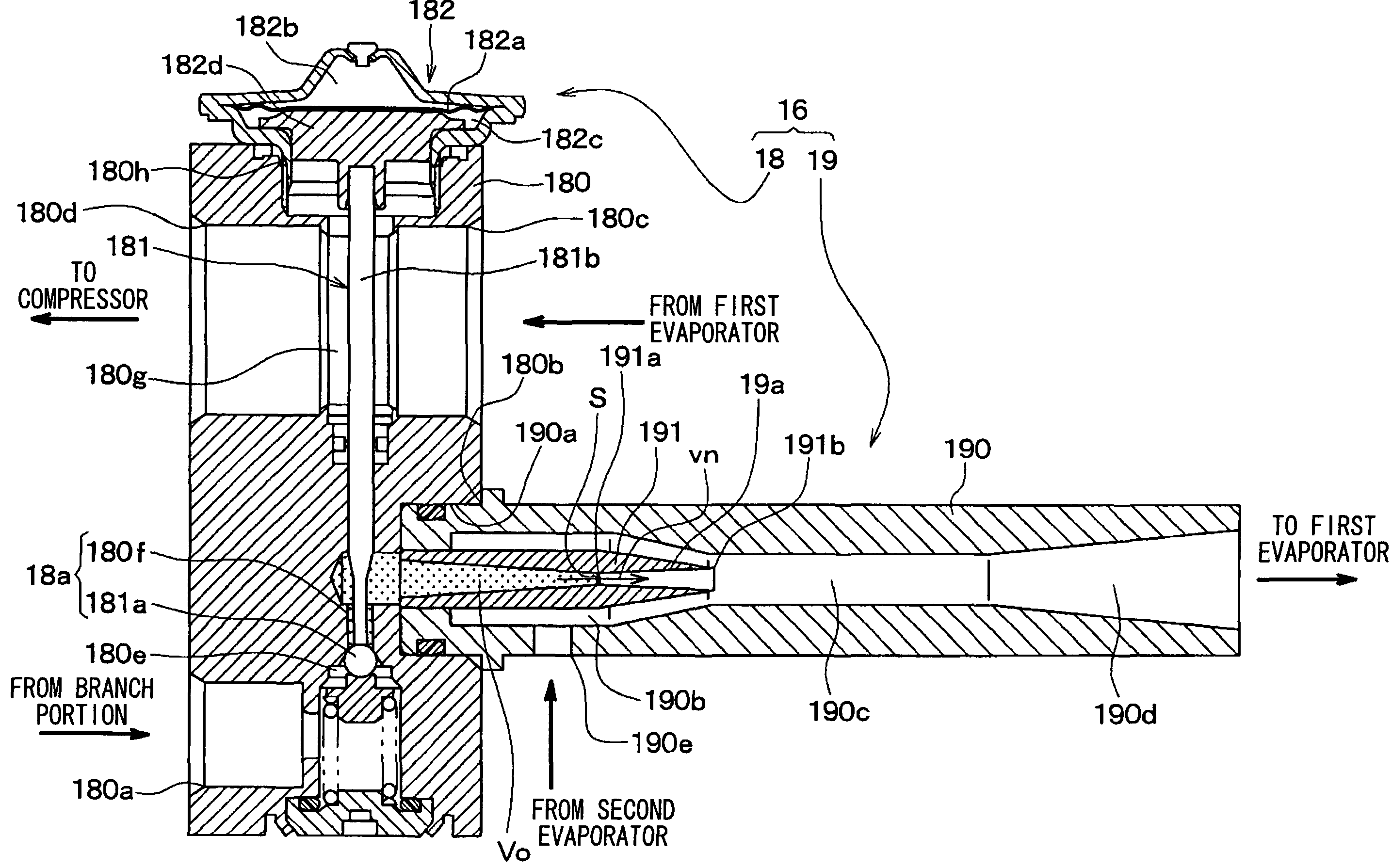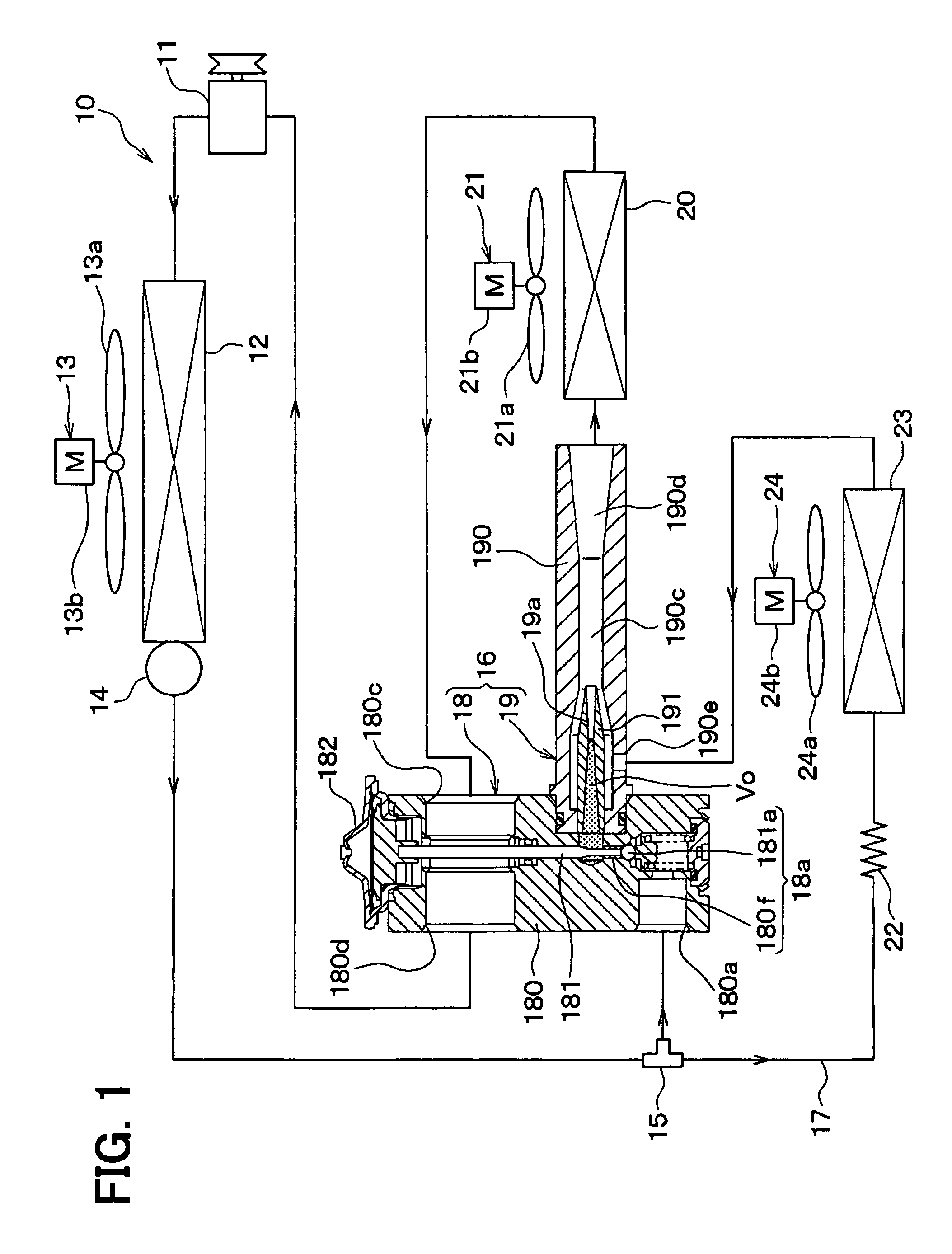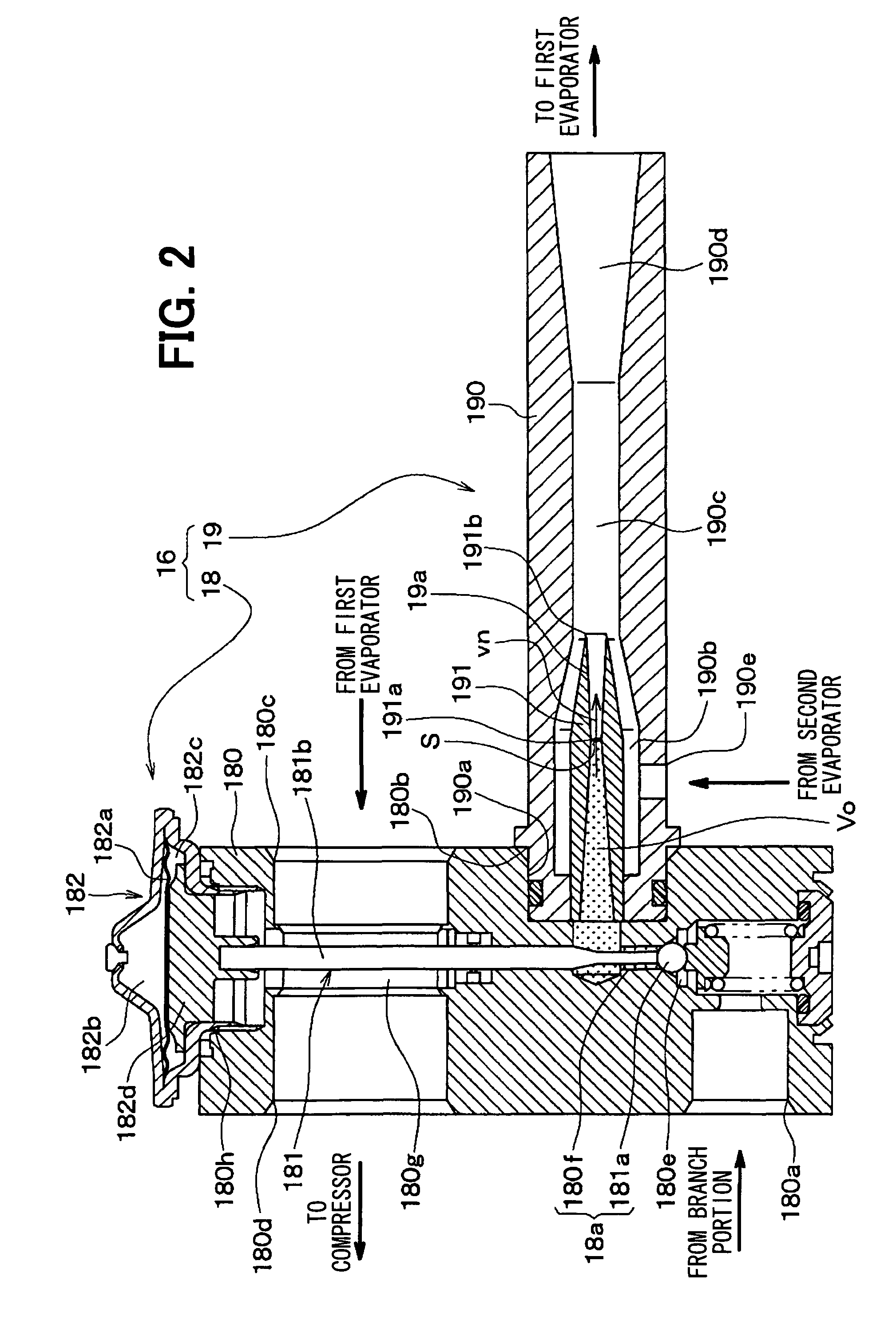Two-stage decompression ejector and refrigeration cycle device
a decompression ejector and cycle device technology, applied in the direction of refrigeration components, machines/engines, lighting and heating apparatus, etc., can solve the problem of increasing the noise level nl
- Summary
- Abstract
- Description
- Claims
- Application Information
AI Technical Summary
Benefits of technology
Problems solved by technology
Method used
Image
Examples
first embodiment
[0042]A first embodiment of the present invention will be described below with reference to FIGS. 1 and 2. In the present embodiment, an ejector-type refrigeration cycle device 10 including a two-stage ejector 16 of the invention is applied to an air conditioner for a vehicle. FIG. 1 shows the entire configuration of the ejector-type refrigeration cycle device 10. In the ejector-type refrigeration cycle device 10, a compressor 11 for sucking and compressing refrigerant is rotatably driven by a vehicle engine (not shown) by an electromagnetic clutch, a belt, or the like.
[0043]As the compressor 11, may be used either of a variable displacement compressor for being capable of adjusting a refrigerant discharge capacity depending on a change in discharge capacity, or a fixed displacement compressor for adjusting a refrigerant discharge capacity by changing an operating efficiency of the compressor by intermittent connection of the electromagnetic clutch. The use of an electric compressor...
second embodiment
[0095]In the first embodiment, the thermal expansion valve 18 and the ejector 19 are integrally connected together to form the two-stage decompression ejector 16. Alternatively, in the present embodiment, a thermal expansion valve and an ejector are integrally formed as shown in FIGS. 3 and 4 thereby to construct a two-stage decompression ejector 26. FIGS. 3 and 4 illustrate the same or equivalent components as those of the first embodiment by the same reference numerals. The same goes for the following drawings.
[0096]FIG. 3 is a diagram showing the entire configuration of the ejector-type refrigeration cycle device 10 of the present embodiment. FIG. 4 is a sectional view of the two-stage decompression ejector 26. The two-stage decompression ejector 26 of the present embodiment includes a housing 260 corresponding to the thermal expansion valve 18 of the first embodiment, a needle valve 261, a temperature sensing portion 262, a body 190 corresponding to the ejector 19 of the first e...
third embodiment
[0107]In the second embodiment, the two-stage decompression ejector 26 operates the needle valve 261 by use of the temperature sensing portion 262 serving as a superheat-degree actuated mechanism to adjust a throttle passage area of the variable throttle mechanism 26a such that the superheat degree of the refrigerant on the outlet side of the first evaporator 20 becomes a predetermined value. In the present embodiment, as shown in the entire configuration diagram of FIG. 5, a two-stage decompression ejector 27, which can electrically control the operation of the needle valve 261, is used.
[0108]In the two-stage decompression ejector 27 of the present embodiment, the needle valve 261 is driven by an electric actuator 270. As the electric actuator 270, for example, a motor actuator, such as a stepping motor, or an electromagnetic solenoid mechanism can be employed.
[0109]The electric actuator 270 is driven and controlled by a control signal output from a controller 30. The controller 30...
PUM
 Login to View More
Login to View More Abstract
Description
Claims
Application Information
 Login to View More
Login to View More - R&D
- Intellectual Property
- Life Sciences
- Materials
- Tech Scout
- Unparalleled Data Quality
- Higher Quality Content
- 60% Fewer Hallucinations
Browse by: Latest US Patents, China's latest patents, Technical Efficacy Thesaurus, Application Domain, Technology Topic, Popular Technical Reports.
© 2025 PatSnap. All rights reserved.Legal|Privacy policy|Modern Slavery Act Transparency Statement|Sitemap|About US| Contact US: help@patsnap.com



